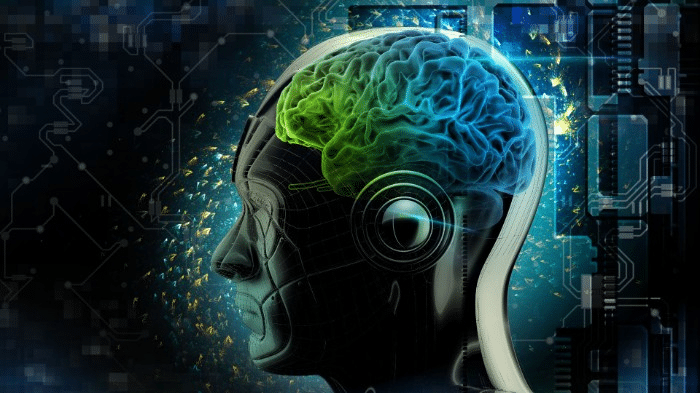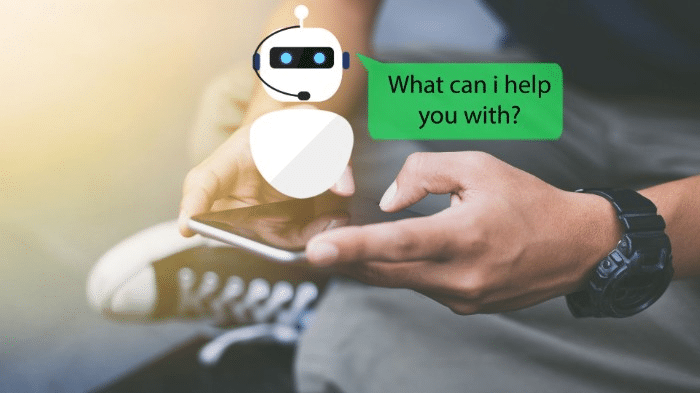Unlocking the Potential of GPT-4: AI’s New Frontier
In the ever-evolving landscape of artificial intelligence, language models have witnessed a remarkable journey. From their humble beginnings to the cutting-edge advancements of today, these models have revolutionized the way we interact with technology. One such breakthrough in the realm of conversational AI is the advent of GPT-4, a monumental leap forward in the capabilities of AI-powered chatbots.

So, what is GPT-4, and how will it impact our lives? Will it make our digital experiences smoother than ever, or will we find ourselves questioning if we’re chatting with a human or a machine? Read on to explore the limitless potential of this AI breakthrough as we delve into the fascinating world of GPT-4 and unravel the mysteries of this awe-inspiring next frontier in artificial intelligence.
Understanding GPT-4
GPT-4, the latest edition of Generative Pre-trained Transformer by Conversion AI, is a powerful AI language model launched on March 13, 2023, with transformative advancements and key features. It has the potential to revolutionize communication, content creation, and problem-solving in various industries.

What sets GPT-4 apart is its remarkable ability to understand and generate language. By leveraging deep learning techniques and massive amounts of training data, GPT-4 exhibits enhanced language generation capabilities, pushing the boundaries of what machines can achieve.
This large multimodal model of GPT builds upon the success of its predecessors, featuring enhancements in its ability to understand and generate human-like text at a rapid pace. While the earlier GPT models could only accept text as a form of input, GPT-4 can also accept image inputs. Plus, increased accuracy, scalability, and fine-tuned language capabilities make GPT 4 an essential tool for businesses and individuals alike.
Some key advancements of GPT 4 include improved context understanding, adoption of any user’s writing style, better text prediction, and more coherent results. In addition, users can expect even more precise content generation, making it an invaluable resource for applications like chatbots, customer support automation, and more.
Using this language model’s ability, businesses can create marketing content, technical writing tasks, and even engaging blog posts like the one you’re reading now!
Similarly, individuals can use this AI model to enhance their creative writing, draft compelling stories, generate personalized messages, or even seek assistance in brainstorming ideas. The versatility of ChatGPT-4 empowers individuals to tap into its capabilities as a writing companion, helping them overcome writer’s block, improve their writing skills, and explore new realms of creativity.
Whether you’re an aspiring writer, a content creator, a business, or someone who simply enjoys the art of writing, ChatGPT-4 opens up a world of possibilities for individuals to express themselves more effectively and effortlessly.
GPT-4 Vs. Previous Models
GPT-4 introduces a notable evolution in comparison to its predecessors, GPT-3 and GPT-3.5. While GPT-3 and GPT-3.5 were primarily text-based models, GPT-4 introduces a significant advancement by accepting an additional input type: images. This expanded capability allows GPT-4 to generate text outputs based on combined inputs of both text and images. Depending on the task at hand, GPT-4 can generate captions, classify visible elements within the images, or even analyze the content of the image itself.

In addition to the enhanced multimodal capabilities, GPT 4 provides an impressive increase in its context-handling abilities. While GPT-3 models were capable of processing up to 2,049 tokens and GPT-3.5 raised that limit to 4,096 tokens (~3 pages of single-lined English text), GPT 4 comes in two variants. The first variant, GPT-4-8K, extends the context length to 8,192 tokens. The second variant, GPT-4-32K, takes a significant leap by enabling the processing of up to 32,768 tokens, roughly equivalent to 50 pages of text. This expanded context capacity allows GPT 4 to handle larger documents, reports, or even conversations while maintaining a rich understanding of the context.
However, these advancements in GPT-4 come with a cost. Compared to the pricing of GPT-3 models, ranging from $0.0004 to $0.02 per 1,000 tokens, and the more cost-effective GPT-3.5-Turbo at $0.002 per 1,000 tokens, utilizing GPT-4 requires a higher investment. For the GPT-4-8K variant, the pricing stands at $0.03 per 1,000 prompt tokens and $0.06 per 1,000 completion tokens. On the other hand, the GPT-4-32K variant comes at the cost of $0.06 per 1,000 prompt tokens and $0.12 per 1,000 completion tokens.
Despite being OpenAI’s most advanced system with numerous enhancements, GPT-4 may only partially replace GPT-3 and GPT-3.5. While GPT-4 outperforms its predecessors in terms of creativity, coherency, and its ability to handle longer texts and images, its increased cost may limit its practicality for certain use cases. In scenarios where multi-page document processing or extensive conversation retention is unnecessary, the capabilities of GPT-3 and GPT-3.5 may suffice.
Putting it simply, GPT-4 showcases significant progress over previous GPT models in terms of advanced reasoning capabilities, context handling, and multimodal processing. By embracing images as an input type and offering increased context capacity, GPT-4 unlocks new possibilities for generative AI development. However, its higher cost may limit its widespread adoption, making GPT-3 and GPT-3.5 still relevant options for various use cases that don’t require the advanced capabilities offered by GPT-4.
Chat GPT-4 Vs. Bing Chat
While both ChatGPT and Bing Chat utilize the power of GPT-based language models, there are notable distinctions between the two platforms. Microsoft’s Bing Chat adopts a more advanced model, granting it a competitive edge over ChatGPT. Bing Chat also boasts broader platform availability and incorporates an AI image generator, enhancing its versatility.

One significant difference is the underlying model used by each platform. While Bing Chat leverages GPT-4 for generating responses, ChatGPT operates on its own GPT-based model, which may not be as advanced as Bing’s implementation.
Platform accessibility is another contrasting factor. Bing Chat is accessible across multiple platforms, providing users with more options for engaging with the chat feature. On the other hand, Chat GPT’s availability might be limited to specific channels or platforms.
Another distinctive feature of Bing Chat is its integration with the broader Bing ecosystem. As Bing primarily functions as a search engine, Bing Chat has the advantage of accessing up-to-date web results and information, providing users with the latest insights. In contrast, Chat GPT may lack awareness of recent events and lacks the ability to access real-time web information.
Subscription options differ as well. ChatGPT offers a ChatGPT Plus subscription that provides priority access and additional benefits to subscribers. Bing, however, remains free to use, albeit with occasional sponsored results due to Microsoft’s reliance on ad revenue.
Settings and fine-tuning options are other aspects where the two platforms diverge. Bing Chat offers three chat modes, allowing users to tailor their chat experience to some extent. In contrast, ChatGPT does not provide specific settings or customization options for its chat functionality.
When it comes to language support, Bing Chat officially supports numerous non-English languages, making it more accessible to a global user base. While ChatGPT can comprehend multiple languages to some extent, its training primarily revolves around English, which may affect its proficiency in handling other languages.
Finally, there is a trade-off between response length and accuracy. ChatGPT has the potential to generate longer, more creative responses. However, this may come at the cost of accuracy, as ChatGPT needs more ability to fact-check its answers with external sources. Bing Chat, with its integration into the new Bing ecosystem, strives to provide more accurate and reliable responses.
In summary, while both ChatGPT and Bing Chat harness the power of GPT-based language models, they adopt different approaches and offer distinct features. Bing Chat’s utilization of GPT-4, broader platform availability, integrated AI image generator, and access to real-time information set it apart from ChatGPT. However, ChatGPT’s potential for longer creative responses and its unique subscription offering provide an alternative experience. The choice between the two depends on individual preferences, desired functionalities, and language requirements.
Training GPT-4
GPT 4, like its predecessors, follows a transformer-based model architecture. During its training process, GPT-4 undergoes two key stages: pretraining and fine-tuning.

In the initial pretraining phase, GPT 4 is exposed to a vast amount of data, including both publicly available information and data licensed from third-party providers. This extensive exposure enables GPT 4 to learn patterns and correlations within the data, allowing it to make predictions about the next token in a sequence.
However, pretraining alone is not sufficient to ensure optimal performance and alignment with human expectations. Therefore, GPT-4 undergoes a subsequent fine-tuning stage that involves reinforcement learning from both human and AI feedback. This fine-tuning process aims to align the model’s behaviour with human standards and policy compliance.
Human feedback plays a crucial role in refining GPT-4’s responses and ensuring they meet desired standards. By providing feedback on generated outputs, human evaluators help guide this large language model towards more accurate and contextually appropriate responses.
Additionally, AI feedback contributes to the fine-tuning process. This new model receives reinforcement signals from AI systems designed to evaluate and analyze the quality of its generated responses. This iterative feedback loop helps GPT-4 improve its performance and align its outputs with desired outcomes.
The combined efforts of pretraining, reinforcement learning, human feedback, and AI evaluation contribute to shaping GPT-4 into a powerful and refined language model. Through this training process, GPT 4 achieves a balance between prediction capabilities and alignment with human expectations, providing users with enhanced language generation capabilities, factual responses and improved overall performance.
Real-World Applications

The advancements brought by GPT-4 unveil a world of possibilities across various domains. With its enhanced capabilities, GPT-4 finds applications in a wide range of real-world scenarios.
Content Creation and Marketing: As discussed above, businesses can leverage GPT-4’s language generation prowess to create compelling marketing content, technical documentation, and engaging blog posts. GPT 4’s ability to process longer pieces of text allows for the production of comprehensive and informative materials.
Conversational Agents: GPT-4’s chat functionality enables the development of conversational agents that can handle complex interactions with users. Whether it’s customer support, virtual assistants, or interactive chatbots, GPT-4 can facilitate natural and context-aware conversations.
Language Translation and Understanding: GPT-4’s language comprehension capabilities make it a valuable tool for language translation and understanding tasks. It can assist in breaking down language barriers and enabling effective communication across different languages.
Content Analysis and Summarization: GPT-4’s ability to analyze and summarize larger documents or reports proves beneficial in research, data analysis, and content curation tasks. It can save time and effort by distilling relevant information from extensive textual sources.
Image-Text Integration: With the incorporation of image inputs, GPT 4 extends its applications to image-captioning, visual element classification, and image analysis tasks. It adds a new dimension to the model’s capabilities, allowing it to process and generate text outputs based on combined visual and textual inputs.
Creative Writing and Storytelling: GPT-4’s improved creative abilities make it a valuable tool for authors, screenwriters, and storytellers. It can generate imaginative narratives, plot ideas, and story outlines, providing inspiration and assisting in the creative process.
These are just a few examples of the diverse applications made possible by GPT 4. As developers and researchers explore its capabilities further, we can expect to witness even more innovative and practical use cases in the future. GPT-4’s advancements propel the field of generative AI forward, empowering individuals and businesses with a powerful tool for language generation and understanding.
Conclusion: The Future of GPT-4 and AI Chatbots
As we delve into the realm of GPT-4 and AI chatbots, it becomes evident that we are witnessing the dawn of a new era in conversational AI. The capabilities of GPT-4, combined with the ongoing advancements in natural language processing, hold immense promise for the future of interactive systems.
AI chatbots powered by GPT-4 are poised to become even more human-like and intelligent, enabling seamless and meaningful conversations with users. With GPT-4’s enhanced context awareness and expanded input capabilities, chatbots can provide personalized and relevant responses that cater to individual needs.
Imagine engaging with a chatbot that not only understands your queries but also considers visual inputs, allowing for richer and more nuanced interactions. GPT-4’s integration of image understanding expands the possibilities of chatbot applications, from visual assistance to interactive storytelling.
The future of GPT 4 and AI chatbots extends beyond mere text-based conversations. As research and development progress, we can expect these systems to incorporate multimodal inputs, including audio, video, and augmented reality, to create immersive and lifelike interactions.
Furthermore, ongoing advancements in ethical AI practices ensure that the development of GPT-4 and AI chatbots prioritizes responsible and trustworthy interactions. Efforts to address biases, improve fact-checking capabilities, and enhance transparency in decision-making contribute to building reliable and unbiased conversational systems.
The potential of GPT-4 and AI chatbots goes beyond individual users. Industries such as customer support, healthcare, education, and entertainment stand to benefit from the deployment of intelligent conversational agents. From providing personalized recommendations to delivering accurate information, these systems have the potential to revolutionize how we interact with technology.
As we look ahead, embracing the potential of GPT-4 and AI chatbots requires a balance between technological advancements and ethical considerations. By harnessing the power of intelligent conversations, we can pave the way for a future where AI seamlessly integrates into our daily lives, enhancing productivity, accessibility, and human-computer interaction.
The journey toward intelligent chatbots powered by GPT 4 has only just begun, and the possibilities that lie ahead are truly exciting. Let us embrace this transformative technology, pushing the boundaries of human-computer interaction and unlocking a future where intelligent conversations become a natural part of our lives.
GPT-4: Frequently Asked Questions
What is the GPT-4 release date?
GPT-4 had an initial release date of March 14, 2023, but was launched for the public one day ahead on March 13, 2023.
How different is Chat GPT-4 from other language models?
Chat GPT 4 being the latest language model, introduces image input capabilities and enhanced context awareness, setting it apart from previous large-scale models and enabling more dynamic and comprehensive interactions.
Is GPT-4 free?
GPT-4 comes with a cost for usage. While some features may be available for free, accessing the most advanced capabilities of GPT-4 typically requires a subscription or payment. If you want to use a language model for free, try other large language models like GPT-3 or GPT 3.5 for casual conversation.
Can human feedback improve GPT-4?
Yes, early feedback played a crucial role in refining and enhancing GPT-4’s performance. Through reinforcement learning from both human test takers and AI feedback and evidence-based reading, GPT-4 continuously learns and improves its responses.
Is GPT-4 available for the public?
Yes, GPT-4 is available for public use. However, access to certain advanced features or capabilities may require a subscription or payment, depending on the platform or service offering it.
Where can I try GPT-4?
GPT-4 can be experienced through various platforms and services that have integrated the model. Some platforms may offer free access to GPT-4, while others may have subscription plans or usage-based pricing. Check with specific platforms or service providers for availability and access details.
What to expect from GPT-4?
GPT-4 introduces several advancements, including the ability to process text and image inputs, extended conversations, improved coherence, and a better chat interface. These enhancements result in more accurate, creative, and context-aware responses, offering a more immersive conversational experience.
Will there be a GPT 5?
While there is no official confirmation from OpenAI CEO Sam Altman, it is likely that OpenAI will continue to push the boundaries of language models, and we can anticipate future iterations like GPT-5 to enhance the capabilities of generative AI further.
What is GPT-3 vs GPT-4?
GPT-4 builds upon the advancements of GPT-3, introducing image input capabilities, extended context length, improved coherence, and better AI safety implications. These upgrades allow GPT 4 to process both text and images, generate more contextually relevant responses, and deliver a more comprehensive conversational experience compared to GPT-3.



